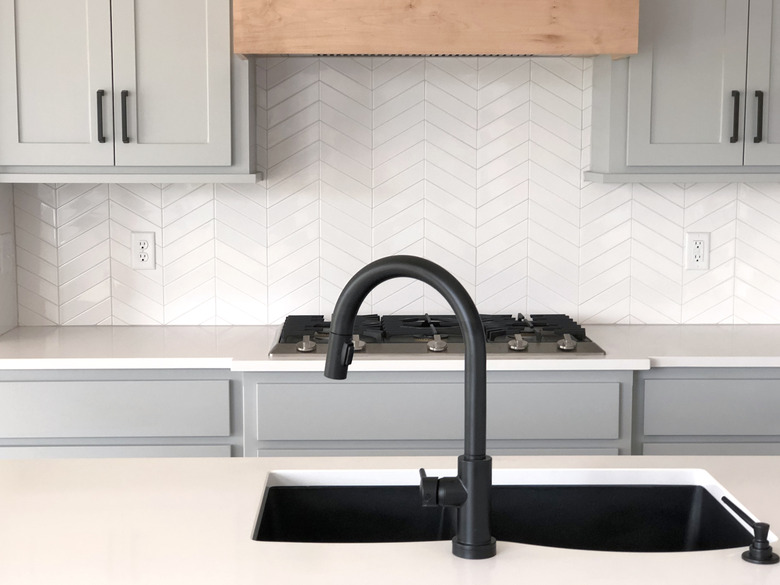Removing Formica Backsplash
Formica is a brand of plastic laminate with which anyone who has seen a kitchen designed in the 1960s is familiar, because it was all the rage back then. It's still popular today, but not as much, because homeowners have more choices when it comes to countertops and backsplash materials. If your Formica backsplash is looking dated, and you want to replace it with a different material or just let the wall speak for itself, you have about an hour of not-too-difficult grunt labor before you.
Backsplash Removal Basics
Backsplash Removal Basics
Whether the backsplash is a single sheet of Formica or laminated strip of plywood or particleboard, it's probably glued to the wall. If it's a laminated strip, it's probably screwed to the countertop and perhaps also to the wall. Some backsplashes are incorporated into the countertop, making removal of the backsplash impossible without also removing the countertop. The job is going to require a drill, screw bit, putty knife or pry bar, utility knife and possibly a reciprocating saw.
Remove Laminate Strip Backsplash
Remove Laminate Strip Backsplash
You probably won't need any tools other than a stiff metal putty knife and a hammer to remove a strip of Formica from the wall, because it isn't screwed anywhere, just glued. Work the putty knife between the backsplash and the wall, tapping with a hammer if necessary to get it started, and pry outward as you move the putty knife forward. Eventually, you'll work enough of the flexible plastic material away from the wall to allow you to grab the edge and pull as you continue prying with the putty knife. It won't be long before the entire strip comes off.
You'll be left with some damage to the wall and probably some glue residue to remove, which you should also be able to do by chipping with the putty knife, as Two Feet First discovered. Avoid the temptation to heat the backsplash with a heat gun to soften the adhesive, because you'll be left with a sticky mess on the wall that will be much harder to remove.
Removing Backsplash Mounted on Particleboard
Removing Backsplash Mounted on Particleboard
A particleboard backsplash is usually screwed to the countertop. You access the screws from inside the cabinet, so you may have to remove all the drawers and shelves to make room. Once you've backed out and removed all the screws you can find, using a drill and screw bit, cut through the caulk around the perimeter of the backsplash with a utility knife, including at the point where it meets the countertop. If the backsplash isn't screwed to the wall, you should be able to pry it off using the same technique you use for sheet laminate.
If prying doesn't work, you have a choice. You can either pry the laminate off the surface of the particleboard to expose the screws, or you can work the blade of a reciprocating saw behind the particleboard and cut the screws. Cutting the screws is faster, but it damages the wall. If the wall is drywall, that isn't a big problem, because drywall is easy to patch with joint compound, patching compound and drywall tape.
Remove Formica Backsplash Integrated With Countertop
Remove Formica Backsplash Integrated With Countertop
It's common for Formica countertops to curve up at the edges to provide their own backsplashes, and to remove the backsplash, you have to remove the whole countertop. Start by removing the drawers and shelves and disconnecting the sink plumbing. Look underneath the countertop for screws holding it to the cabinet framing and remove those, then try lifting. If you're lucky, it's mission accomplished.
If the countertop won't budge, it's probably glued, so use your putty knife and hammer to break the glue bond between the cabinet framing and the countertop by tapping at the front edge until you can lift a corner, then working your way to the other corner, tapping and lifting as you go. Insert a pry bar underneath the countertop, pry it upward and pull forward.
If you find it impossible to remove the backsplash countertop by pulling, it's probably because the backsplash is glued to the wall. If so, use your hammer and putty knife to tap and pry it free, using the technique for removing a particleboard backsplash.
